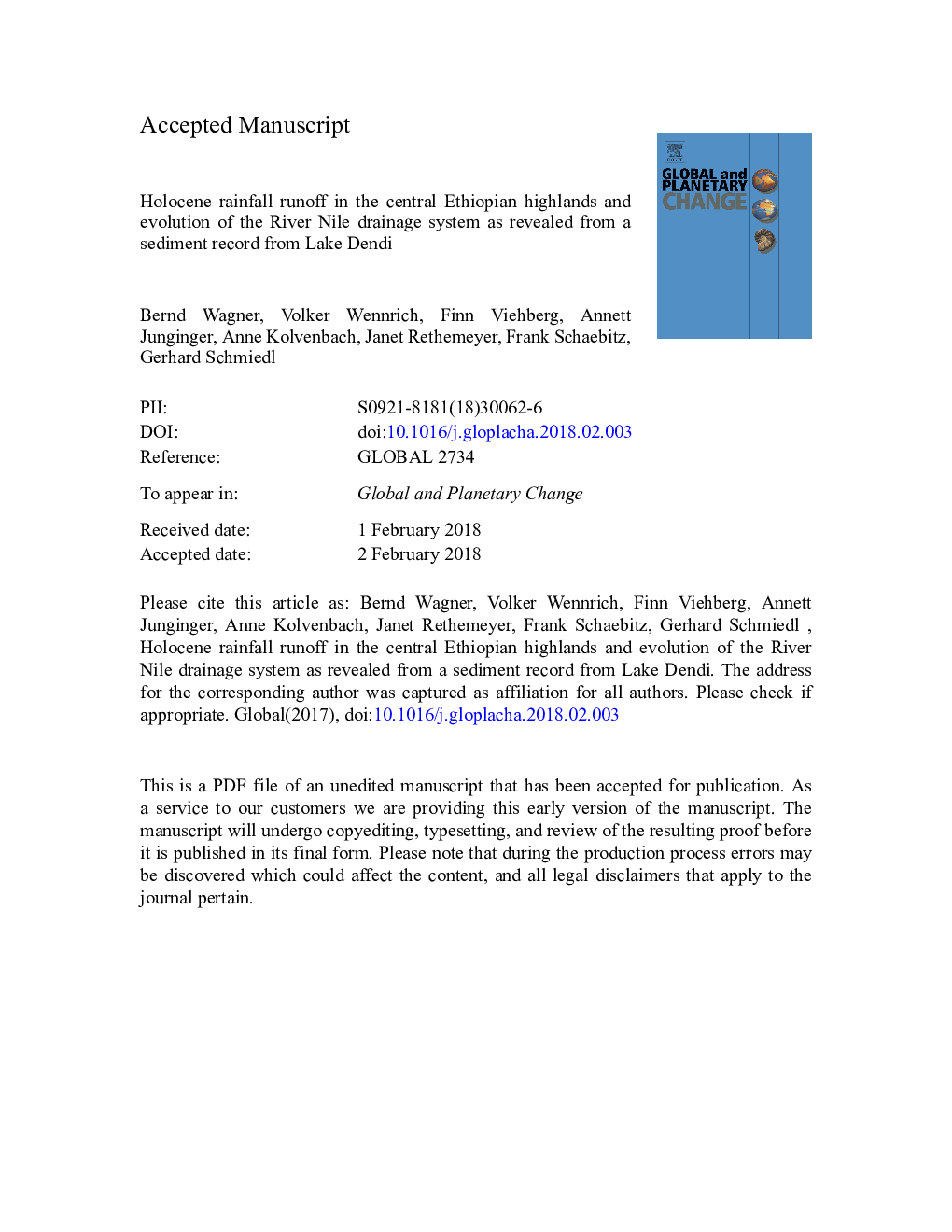| Article ID | Journal | Published Year | Pages | File Type |
|---|---|---|---|---|
| 8867532 | Global and Planetary Change | 2018 | 72 Pages |
Abstract
A 12â¯m long sediment sequence was recovered from the eastern Dendi Crater lake, located on the central Ethiopian Plateau and in the region of the Blue Nile headwaters. 24 AMS radiocarbon dates from bulk organic carbon samples indicate that the sediment sequence spans the last ca. 12â¯calâ¯kyrâ¯BP. Sedimentological and geochemical data from the sediment sequence that were combined with initial diatom information show only moderate change in precipitation and catchment runoff during that period, probably due to the elevated location of the study region in the Ethiopian highlands. Less humid conditions prevailed during the Younger Dryas (YD). After the return to full humid conditions of the African Humid Period (AHP), a ~2â¯m thick tephra layer, probably originating from an eruption of the Wenchi crater 12â¯km to the west of the lake, was deposited at 10.2â¯calâ¯kyrâ¯BP. Subsequently, single thin horizons of high clastic matter imply that short spells of dry conditions and significantly increased rainfall, respectively, superimpose the generally humid conditions. The end of the AHP is rather gradual and precedes relatively stable and less humid conditions around 3.9â¯calâ¯kyrâ¯BP. Subsequently, slightly increasing catchment runoff led to sediment redeposition, increasing nutrient supply, and highest trophic states in the lake until 1.5â¯calâ¯kyrâ¯BP. A highly variable increase in clastic matter indicates fluctuating and increasing catchment runoff over the last 1500â¯years. The data from Lake Dendi show, in concert with other records from the Nile catchment and the Eastern Mediterranean Sea (EMS), that the Blue Nile discharge was relatively high between ca. 10.0 and 8.7â¯calâ¯kyrâ¯BP. Subsequent aridification peaked with some regional differences between ca. 4.0 and 2.6â¯calâ¯kyrâ¯BP. Higher discharge in the Blue Nile hydraulic regime after 2.6â¯calâ¯kyrâ¯BP is probably triggered by more local increase in rainfall, which is tentatively caused by a change in the influence of the Indian Ocean monsoon.
Related Topics
Physical Sciences and Engineering
Earth and Planetary Sciences
Earth-Surface Processes
Authors
Bernd Wagner, Volker Wennrich, Finn Viehberg, Annett Junginger, Anne Kolvenbach, Janet Rethemeyer, Frank Schaebitz, Gerhard Schmiedl,
